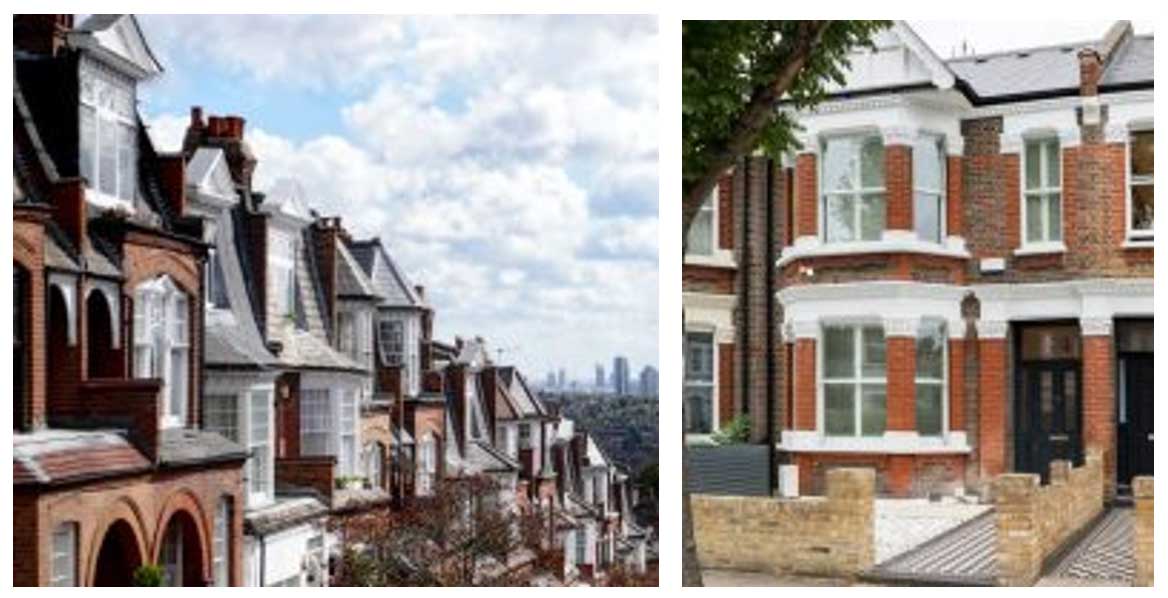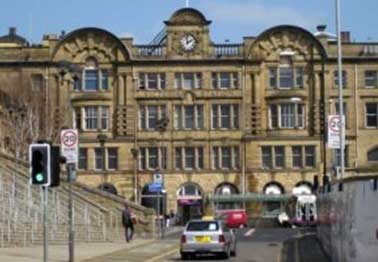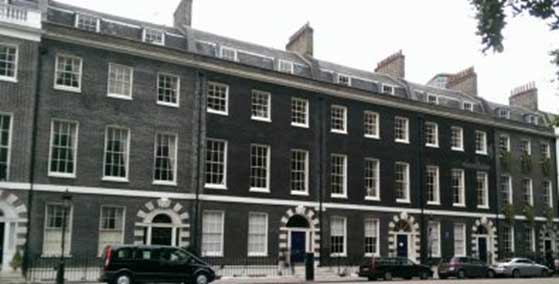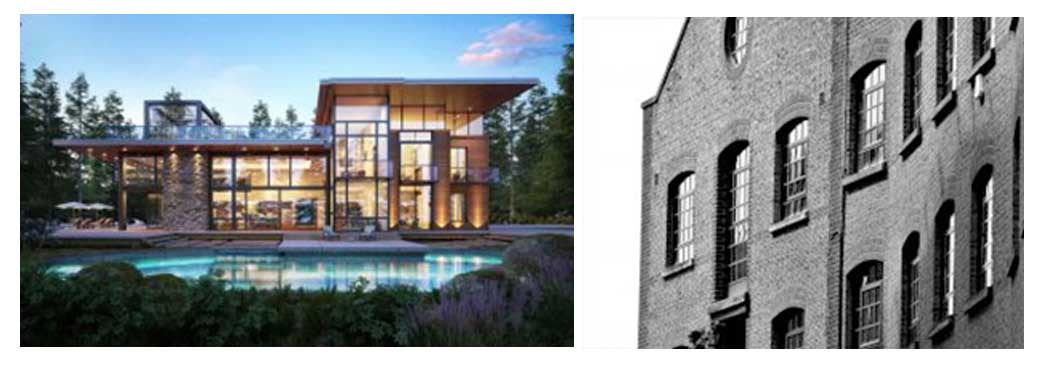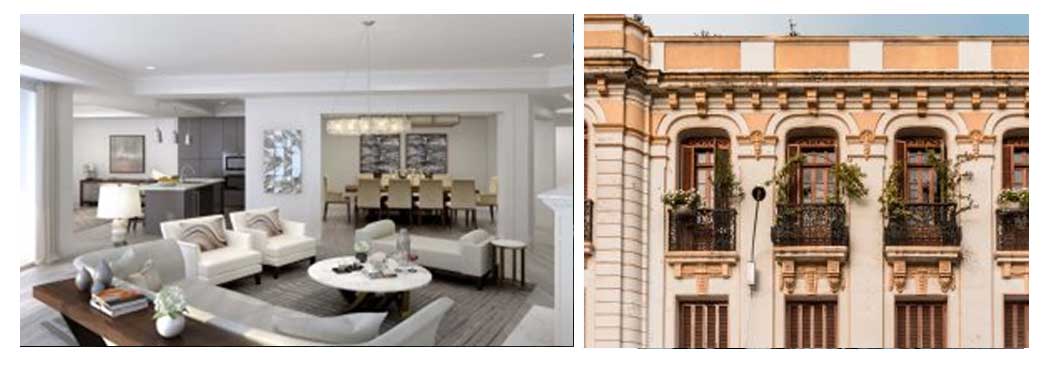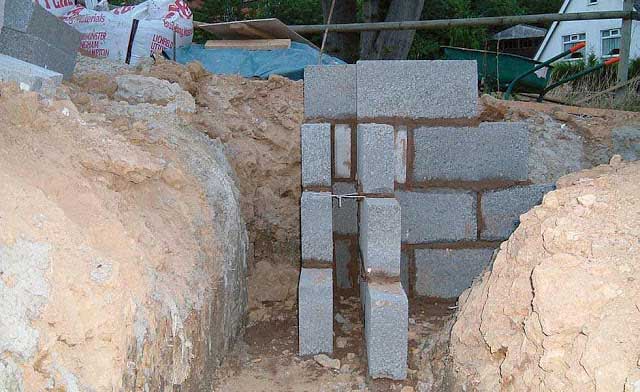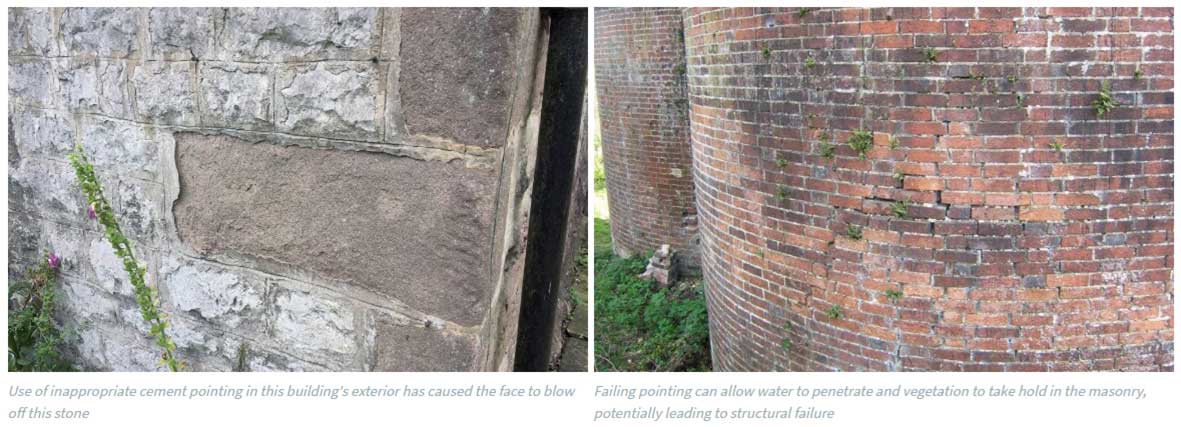Masonry walls are built of a series of individual units – generally brick, stone or flint – with mortar acting as the glue that holds them together. The external face of the finished wall therefore consists of masonry units separated by mortar joints. These joints are known as pointing.
Mortar basically comprises an aggregate (sand) held in a matrix by a binder. In old walls the latter ingredient was usually lime, but might be earth or a combination of the two. Stone walls were often built with earth-lime mortar, for example, but pointed using lime.
What is pointing?
The most obvious purpose of pointing is to fill the gaps between the masonry units. This stops them from becoming loose and prevents water, draughts and foreign material such as dirt and vegetation from penetrating the wall.
Even more crucial is pointing’s role in managing moisture in the wall fabric. Old bricks are soft and permeable, while stone varies greatly from soft sandstones to very hard flint – but is generally relatively soft and permeable.
These materials absorb water readily; becoming wet when it rains and then drying through evaporation. The lime mortar pointing is also soft and permeable, which helps to ensure that this cycle of absorption and evaporation can continue to take place over the whole wall surface.
Over a long period of time, this #repeating cycle causes erosion of the surface of the material. If there is a frost while the wall fabric is still wet, the water in the wall freezes and expands, causing damage to the surface.
To mitigate this, the #pointing mortar is intentionally made softer and more permeable than the masonry units. This ensures moisture is concentrated in the mortar joints as opposed to the wall fabric. Most of the evaporative drying therefore happens in the pointing rather than the #bricks or #stones.
When there is a frost, the majority of the water will be in the mortar joints. This means most of the erosion and freeze/thaw damage is limited to the pointing.
This sacrificial function is fundamental to ensuring the long-term performance of a wall. The valuable and hard to replace brick or stone is protected at the expense of the mortar joints, which gradually erode over time.
Eventually the exposed mortar will have degraded to the point that it is no longer performing effectively and repointing is necessary. In normal conditions this can be expected to be a once in a generation task.
What can go wrong?
The most common problem you’re likely to encounter is that previous repointing has been carried out using inappropriate mortar.
Modern versions use Portland cement as a binder. This creates a hard, impermeable mortar that suits modern bricks that have been fired at very high temperatures. When used with the softer masonry units in old walls, however, it can have very serious consequences.
In period properties, cement mortar blocks the evaporation route through the mortar joint and concentrates water in the bricks or stones, causing these to erode instead of the pointing. When there’s a frost the wet masonry units are then subject to freeze/thaw action.
This causes spalling of the face of bricks, where the protective skin on the surface is blown off. In severe cases whole bricks or soft stones can completely disintegrate.
The hard, inflexible modern cement #pointing is incompatible with the soft, flexible mortar behind it and begins to crack and fail. This allows water into the wall fabric, where it becomes trapped, which can ultimately cause the core of the wall to degrade.
In addition, contrary to what you might expect, cement pointing in an old wall will fail much more quickly than softer lime versions.
When pointing does start to fail, whether through natural erosion of lime mortar or the failure of inappropriate cement mortar, the ability of the wall to manage moisture is compromised and it will tend to become damp.
Ultimately, the wall’s structural integrity will be compromised. Roots and germinating seeds of plants can start to grow in failed joints, causing serious problems as they expand.
When to repoint old walls
A wall with soft mortar pointing needs to be repaired once the mortar has eroded well behind the face of the masonry units. Erosion will occur unevenly over the surface of a wall; the time for repointing has come when the mortar has receded 5mm to 10mm back from the face.
If a wall has been repointed using cement the work will almost certainly need to be redone with lime mortar at some stage. Judging when to do this is not necessarily straightforward.
If the pointing is failing, the wall is becoming damp or masonry units are starting to degrade then repointing is urgently necessary. However some walls repointed in cement, particularly those in sheltered positions, can continue for a considerable time without showing any adverse effects.
Repointing tips
- Rake out old pointing to a depth of 10mm.
- Large joints in stonework will need to be raked deeper – take care not to destabilise the wall.
- Cement mortar can be hard to remove and risks causing damage – wait until the work is necessary.
- Only use hand tools, and proceed with great care. Never, ever use an angle grinder.
- Use appropriate lime mortar, which should be matched to the old pointing if possible.
- Hot mixed mortar is best, especially in damp walls, but be careful of health and safety.
- Press the mix well into the joints, knock back and then tend the mortar as it goes off.
- Finish with an open texture, set back from the face and not covering the masonry units.
- Protect drying mortar from frost, direct sun and wind.
Attempting to remove the cement pointing, especially if it is still sound, will inevitably cause some damage to the masonry units – so it is best to hold off if there are no problems. Because of the incompatibility of materials, the cement will begin to fail at some stage. This is the time to #repoint; when it is much easier to remove.
How to repoint
The good news is this is a relatively straightforward job that can be undertaken by any competent person with a bit of instruction and training.
The first stage is to rake out the old pointing to remove any failing mortar and provide sufficient depth (10mm) to key the new pointing. You’ll also need to get rid of any very loose and friable mortar, which might involve going deeper.
With a stone wall in poor condition that might be very much deeper. If you get to the stage where the stability of masonry units or integrity of the wall deteriorates, then it is time to call in an expert.
Once the joints have been raked out, they must then be dampened with a fine water spray. This step helps to prevent the new pointing from drying too quickly and failing.
The new mortar is then forced into the joints with a pointing iron or small trowel, ensuring that it is well packed and finished slightly proud. For very deep joints this will be a two stage process, allowing the first stage to go off before progressing to the second.
Once the mortar has started to harden (when it can just be marked with a thumbnail) it should be knocked back into the joints. Finally the pointing should be rubbed back to just behind the masonry units, making sure that it does not go over their edges.
The surface finish should be a rough, open texture to maximise the potential for evaporation. Struck pointing or ribbon pointing, seen much too often in the repair of old walls, is not appropriate either visually or functionally.
Some walls were originally pointed using specialist decorative techniques. These include tuck pointing – popular in Georgian brickwork – and galleting (the incorporation of stone chips in thick joints of stone or flint walls). These are specialist techniques that will require an experienced craftsman.
What pointing mortar should I use?
The best bet is to try to match the original pointing mortar as closely as possible. This is most likely to be compatible with the particular brick or stone used to build the wall originally. It will also maintain the appearance of the wall and help to ensure it fits in with the local vernacular tradition.
Lime mortars fall broadly into three categories, each of which has different properties and applications:
Hydraulic mortars
These include material that causes them to set quickly and develop higher strength than other lime mortars.
They vary greatly in strength, with those at the top of the scale becoming even harder than cement. They are rarely appropriate for repointing old masonry but the weakest hydraulic mortars can be used in exposed situations with very hard stone. Great care must be taken if you’re considering them.
Lime putty-based mortars
These are non-hydraulic. Formed by slaking quicklime, the putty is used as the binder and mixed with carefully-selected sharp sand. This is widely available in ready-mix form, and can be stored almost indefinitely before use, provided air is excluded.
It is straightforward to use and sets as a result of exposure to CO2 in the air. It provides a soft, flexible and highly breathable pointing that is compatible with most old masonry.
Hot mixed lime mortar
This is also non-hydraulic, but is made onsite by combining quicklime, sand and water. Quicklime is hazardous and requires careful handling – nobody should attempt hot mixing without proper training. It makes a very workable mortar that is extremely easy to use.
Hot mixed lime mortar pointing has exceptional moisture management properties, actively wicking water from the surrounding fabric. It is by far the best material to use in damp masonry, as it dries walls out quickly and effectively.

